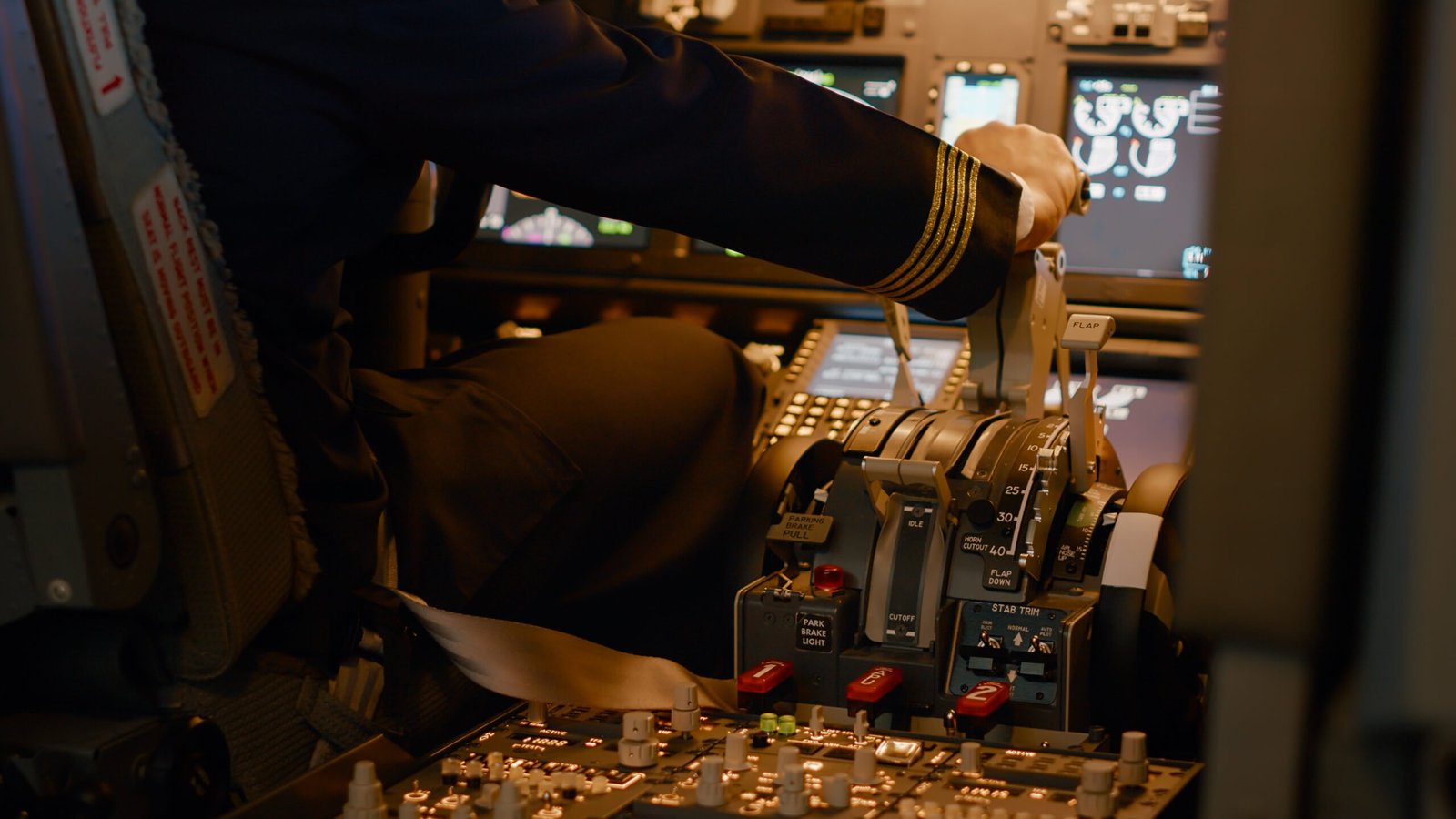The Boeing 777 stands as a pinnacle of modern aviation, renowned for its innovation, comfort, and efficiency. Central to its design ethos is an unwavering commitment to safety. In the ever-evolving landscape of air travel, ensuring the safety of passengers and crew remains paramount. This deep dive into the safety features of the Boeing 777 aims to shed light on the meticulous engineering and advanced technology that underpins its reputation as one of the safest commercial aircraft in the skies today. From its robust structural integrity to state-of-the-art avionics systems and comprehensive emergency protocols, join us as we explore the intricate network of safety measures that define the Boeing 777 experience.

Avionics and Systems:
The Boeing 777 is equipped with state-of-the-art avionics and systems that not only enhance flight performance but also contribute significantly to the overall safety of the aircraft.
From advanced flight control systems to redundant backup systems, the Boeing 777 is designed to ensure optimal operation in various flight conditions.
One of the key features of the Boeing 777 is its advanced flight control systems, which utilize fly-by-wire technology to provide precise control inputs to the aircraft’s control surfaces.
Unlike traditional mechanical control systems, fly-by-wire systems use electronic signals to transmit control commands, resulting in smoother and more responsive handling characteristics.
This technology enhances flight stability and control, particularly during critical phases of flight such as takeoff, landing, and in-flight maneuvers.
In addition to fly-by-wire technology, the Boeing 777 is equipped with sophisticated autothrottle systems that automatically adjust engine thrust to maintain the desired airspeed and altitude. These systems help to reduce pilot workload and improve fuel efficiency by optimizing engine performance throughout the flight.
Furthermore, the Boeing 777 features redundant systems for backup, ensuring continued operation in the event of primary system failures.
Redundancy is incorporated into critical systems such as flight control computers, hydraulic systems, and electrical systems to provide backup functionality in case of primary system malfunctions. This redundancy enhances the overall reliability and safety of the aircraft, allowing it to safely complete flights even in the presence of system failures.
Another notable aspect of the Boeing 777’s avionics and systems is its advanced navigation capabilities. The aircraft is equipped with a suite of navigation aids, including GPS (Global Positioning System), inertial navigation systems, and VHF (Very High Frequency) radio navigation equipment, which enable precise navigation and route tracking.
These navigation systems provide pilots with real-time information about the aircraft’s position, heading, and speed, allowing for accurate navigation and route planning, particularly during long-haul flights over vast oceanic regions.
Overall, the avionics and systems of the Boeing 777 play a crucial role in ensuring the safety and reliability of the aircraft. With advanced flight control systems, redundant backup systems, and state-of-the-art navigation capabilities, the Boeing 777 is equipped to handle the challenges of modern air travel with unparalleled precision and safety.
Maintenance and Inspections:
Maintenance and inspections are integral aspects of ensuring the continued airworthiness and safety of the Boeing 777 fleet. Rigorous maintenance schedules and thorough inspection protocols are followed to identify and address any potential issues before they escalate into safety concerns.
Regular maintenance schedules are established for the Boeing 777 fleet to address routine servicing, component replacements, and system checks.
These maintenance tasks are carried out according to established maintenance programs prescribed by the aircraft manufacturer and regulatory authorities.
Scheduled maintenance activities include tasks such as engine overhauls, landing gear inspections, and avionics system checks, which are performed at specified intervals based on flight hours, calendar time, or other operational criteria.
Quality control measures are implemented during the production process of the Boeing 777 to ensure that each aircraft meets the highest standards of safety and reliability.
Stringent quality assurance procedures are followed at every stage of manufacturing, from component fabrication to final assembly, to verify compliance with design specifications and regulatory requirements.
This includes extensive testing and inspection of critical components and systems to identify any defects or discrepancies that may compromise safety.
Inspections are conducted regularly to ensure compliance with safety regulations and standards, as well as to identify and rectify any potential safety hazards.
These inspections are carried out by qualified maintenance personnel and are often supplemented by audits and oversight from regulatory authorities and airline operators. Inspections may involve visual inspections, non-destructive testing, and performance assessments to verify the integrity and functionality of critical systems and components.
In addition to scheduled maintenance and inspections, the Boeing 777 fleet is subject to unscheduled maintenance events and troubleshooting activities to address unexpected issues that may arise during operation.
Maintenance crews are trained to respond promptly to maintenance discrepancies and are equipped with the necessary tools and resources to perform repairs and corrective actions as required
Case Studies or Examples:
Several real-life incidents highlight the effectiveness of the safety features and systems of the Boeing 777 in ensuring the safety of passengers and crew in challenging situations.
These case studies demonstrate how the aircraft’s robust design and advanced technology have contributed to successful outcomes in emergencies.
One notable example is the “Miracle on the Hudson,” where US Airways Flight 1549, a Boeing 777-200ER, made an emergency landing on the Hudson River in New York City after both engines lost thrust following a bird strike shortly after takeoff.
Despite the loss of engine power, the flight crew successfully executed an emergency ditching maneuver, and all 155 passengers and crew onboard were safely evacuated from the aircraft with no loss of life.
The structural integrity of the Boeing 777, along with its crash-resistant seats and emergency evacuation procedures, played a crucial role in ensuring the successful outcome of this emergency landing.
Another example is the Asiana Airlines Flight 214 accident in 2013, where a Boeing 777-200ER crashed while attempting to land at San Francisco International Airport.
Despite the tragic loss of three lives, the majority of the passengers and crew survived the crash thanks to the aircraft’s safety features and the quick response of emergency responders. Investigations into the accident identified factors such as pilot error and inadequate training as contributing factors, rather than any inherent flaws in the aircraft’s design or systems.
This incident underscored the importance of crew training and adherence to standard operating procedures in ensuring the safe operation of the Boeing 777.
Furthermore, the safe diversion and emergency landing of Malaysia Airlines Flight 370 in 2014 highlighted the capabilities of the Boeing 777 in handling complex and unprecedented situations.
Following the disappearance of the flight en route from Kuala Lumpur to Beijing, the aircraft was believed to have diverted from its planned route and ultimately ran out of fuel, leading to a controlled descent and eventual impact with the ocean.
While the exact circumstances surrounding the disappearance remain unknown, the incident demonstrated the aircraft’s ability to maintain stable flight and communications despite extended periods of flight beyond normal operating parameters.
Conclusion:
The Boeing 777 stands as a beacon of safety and innovation in commercial aviation. Its robust features, from reinforced structures to advanced avionics systems, ensure the utmost safety for passengers and crew. Real-life incidents like the “Miracle on the Hudson” highlight the aircraft’s resilience in emergencies.
With rigorous maintenance and inspection practices, Boeing maintains the highest safety standards for the 777 fleet. As aviation evolves, the Boeing 777 remains a symbol of reliability and trust, setting the benchmark for safety in the skies. In conclusion, the Boeing 777’s unwavering commitment to safety continues to inspire confidence among passengers and operators worldwide.






